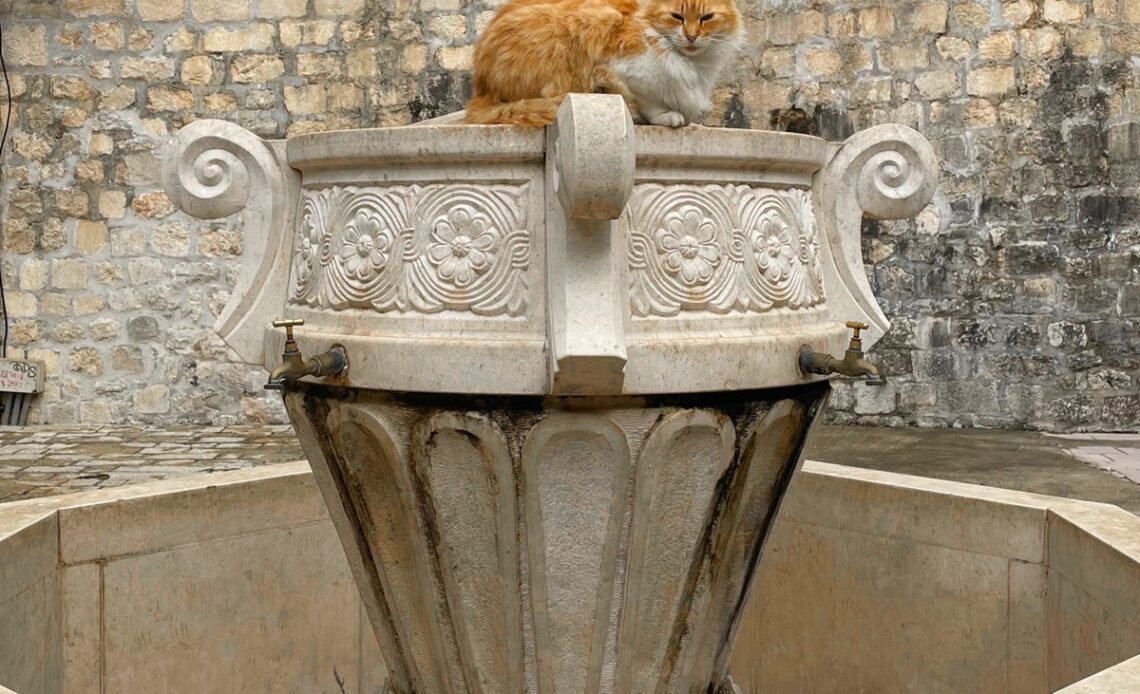Enter Montenegro’s medieval old town of Kotor, wedged between craggy mountains in the corner of a breath-taking, secluded bay off the Adriatic Sea, and it’s not the centuries-old stone walls you’ll notice first. Nor is it the handsome 1602 baroque-style clock tower or the Venetian, café-strewn main square. It won’t be San Giovanni castle spied far in the distance or even the rugged limestone cliffs of Mount Lovćen that hover above.
No, the first thing you’ll notice in Kotor are all the cats. Hundreds to be a little more precise. Weave between the old town’s medieval maze of museums, shops, bars and restaurants and a bowl of biscuits can be found on many street corners, often accompanied by a posse of well-fed felines.
That’s because here in Kotor – one of Montenegro’s most popular and picturesque destinations – cats bring you luck. Or so says Oxana Troshina, Kotor resident and owner of Cats of Kotor, the first cat-themed souvenir shop to open its doors in the old town back in 2012.
Cats are thought to be lucky in this part of Montenegro
(Robyn Wilson)
More than 10 years later and many more cat-devoted shops have followed suit, with the addition of a dedicated cat museum, who say they feed the feline population with some of their profits. This is one of the many ways cats get their food and board in Kotor, with a network of residents sharing the responsibility – particularly in the colder winter months when the cats are invited inside homes, says Oxana.
“Cats are a sign of good luck,” she adds. “Many old people in Kotor will tell you they have always loved cats. Even many years ago, maybe the middle of the 20th century, all their doors would have [cat flaps] especially for the cats so these guests can always come in the house.”
Cat walk: Kotor is home to hundreds of moggies
(Robyn Wilson)
Theories for how this obsession developed are up for discussion. After surviving wars, sieges and earthquakes – including one that devasted Kotor 44 years ago this April – some believe cats have helped to save the town over the years.
Read more on Montenegro travel:
Others say the lucky charms were brought to Kotor by sailors, who docked their feline-filled ships in the Bay of Kotor during a revolt by the Austro-Hungarian navy in 1918 known as the ‘Cattaro mutiny’ – coincidently (or maybe not) Kotor was historically…
Click Here to Read the Full Original Article at The Independent Travel…
